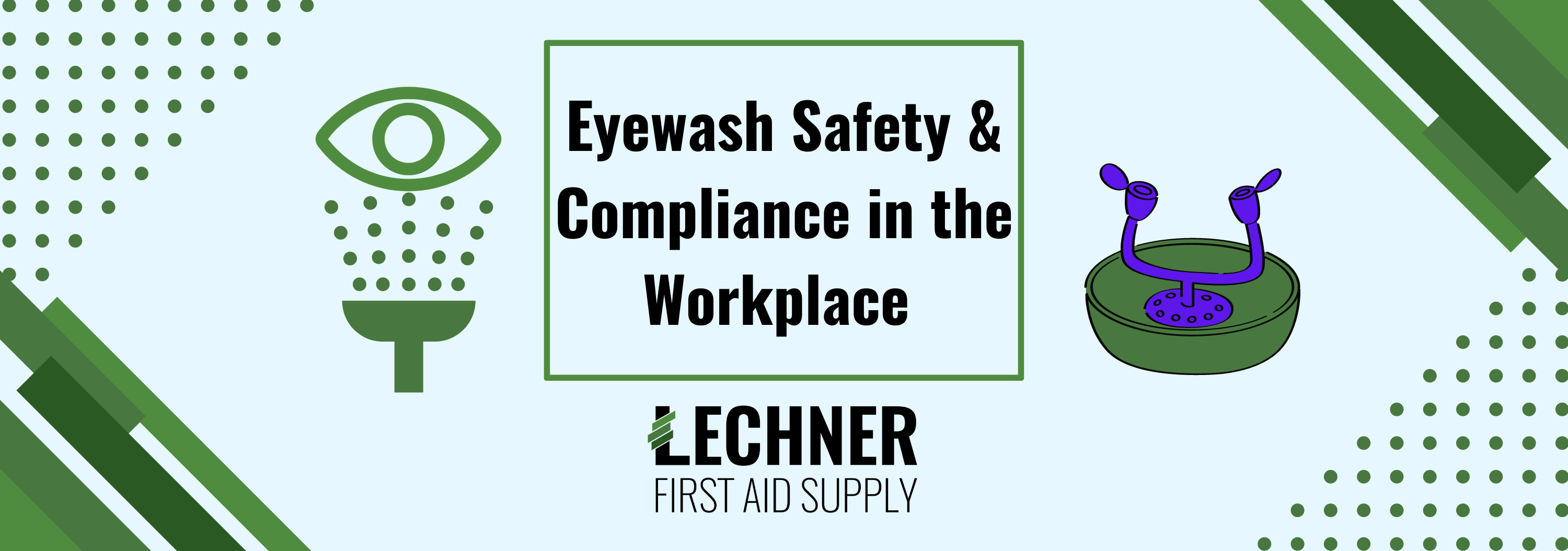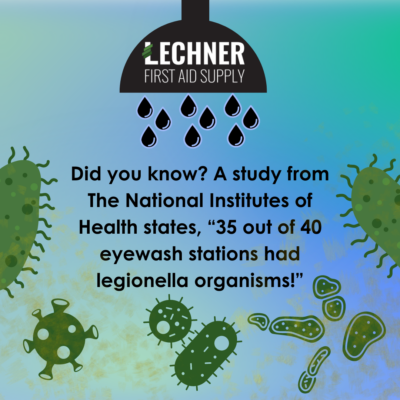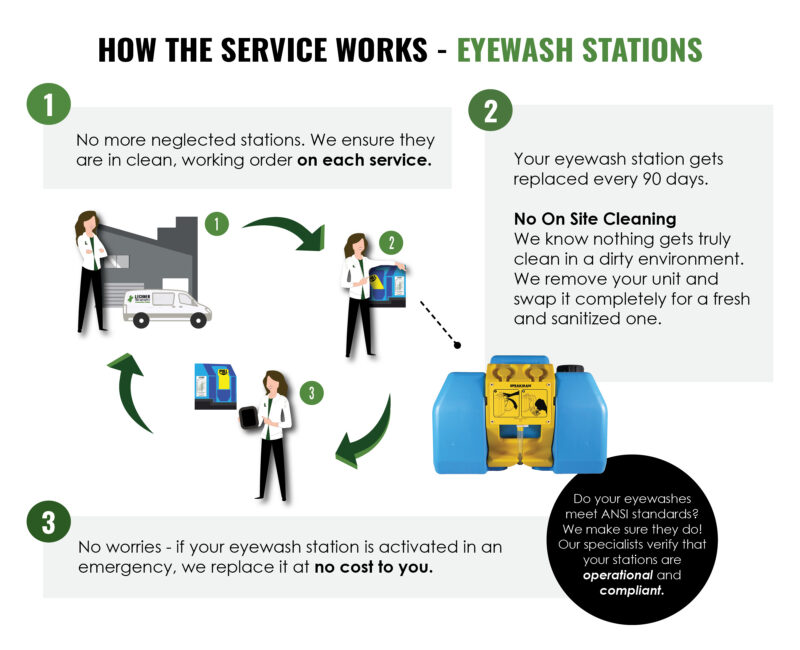
Employee Eyewash Safety & Compliance in the Workplace
Avoid Hazardous Sabotage!
Do you deem workplace eyewashes as wishy-washy? How many professions and trades should reckon such a thing?
Well, ANSI/ISEA Z358.1-2014 says, "Eyewashes must be in a 10 second proximity from workers (55 ft)."
Also, The Bureau of Labor Statistics mentions that In 2020, there were about 18,510 total workers who encountered eye injuries in the workplace.
Not to mention, across 6 different industries! So, take a seat and listen to the industry symphony of eyewash dignity!
Multi-Industry Plead
ANSI points out that if you have laboratory and manufacturing plant employees, they are almost swimming among chemical compounds on a typical basis.
For instance, chemical reactions might not go as anticipated. It’s impossible to be on top of every variable and external factor at all times. Gasses, powders, drugs, and other materials could be agitated with other surrounding reactants. Don’t leave these clinging to your eyes and cause a reaction with your employees!
Chemical Concerns
OSHA discusses formaldehyde woes in standard 1910.1048(i)(3). Humans can’t be exposed to formaldehyde without the installment of an eyewash station in the workplace. It shouldn’t seep into the nose, skin, or eyes.
The National Institute of Environmental Health Science refers to auto workers, scientists, and manufacturers! It is said that these individuals are in major peril due to formaldehyde's wrath!
The TDI illustrates, 11,330 workers had chemical based accidents! The site highlights how these work spaces can't be protocol vacant.
What if your office janitor gets cleaning chemicals or bleach in their eye?
The American Federation of Teachers imparts in a program record, "40% of chemical eye injuries influence janitors."
Chemical burns are stubborn! Cater to optical injuries in a responsive manner! Eye wash fluid fades symptoms! OR embrace long term effects!
The cornea is a crucial "screen-like" layer to the eye that protects and manages light! Although...
A study from the National Library of Medicine indicates, "An imaging test showed after day 12, the cornea swelled to 125.26% from a severe alkali chemical burn."
Take this into consideration, your employees shouldn't condone such an unethical spectacle of unprocurable eyewash stations!
Consequently, Preventing Eye Blindness.org says, "10-20% of eye injuries at work will generate permanent eye damage."
Additionally, The American Optometric Association states that steam can cause chemical burns to the eyes. Also, welders have to be cautious of hazards such as fragments & fiber optics.
Other potential workplace incidents...
Even the employees sitting at their desks could accidentally wipe burning hand sanitizer in their eyes. What if your hand slips and you splatter White Out in your eye?
OR tasks that involve lead composed paint is just another material example that you don’t want to see up close and personal.
The OSHA 29 CFR 1910.151 (c) regulation says that workers who deal with acids are predisposed to getting harmed. Construction workers are forced to maneuver through industrial waste, resulting in an eyewash station demand for both industries.
Eyewash Compliance
OSHA says that eyewash stations have to be up to date and purified. If it becomes just slightly mismanaged, you'll be left defenseless from eye infections.
The Health and Safety magazine suggests that stagnant water carries legionella organisms that attack the lung’s physiological activity! The body shouldn't absorb it!
Do you really want to have weird organisms like acanthamoebas being unwanted guests in your eyes during & after an emergency? We didn’t think so either…containments are a no-go! Let’s reduce infectious strangers who we don’t need to get to know…

Do you have the devices and gizmos to test your eyewash station? Say goodbye to that frustrating narration!
At Lechner First Aid Supply, you can rent eyewashes! Our monthly service won’t have your sanitary conduct swerving! On your scheduled day, impurities won't hide! We replace your units so it's not polluted!

Additionally, The Joint Commission & The Texas Department of Insurance indicates that disposing expired or contaminated fluids can’t be tossed into a sink! The properties of eye wash fluid disinfectant are not meant to accidentally be consumed, or interfere with main water plumbing systems! Individuals who are not facing optical distress, should evade application.
The fluid solution can't freeze, so Lechner will appease!
Lechner reviews the updated eyewash standards to verify and refashion a solid methodology for you! AND We’ll take the old water units off your hands!
Eyewash Safety & What to Do
- Before Usage: OSHA says that nozzles on eyewash equipment must be covered (airtight) at all times unless used according to standard 29 CFR 1910.151(c).
- ANSI Z358.1-2014: eyewash stations must be in an illuminated area so it's more readily available for the user.
- Maintenance: ANSI announced that eyewash fluid has to be kept at 60-100 degrees fahrenheit!
- Amidst Emergency: You might think, “I can just spray regular water through a faucet or hose to help.”
IT'S A FALLACY! NOW, PREVENT TRAVESTY!
The National Teaching Science Association & ANSI/ISEA Z358.1-2014 reveals that tepid water is required because this lukewarm temperature is not only comfortable, but is rigidly supervised. This monitored water is then less likely to clog when it's needed most. The fluidity is ultimately supreme!
WebMD says tepid is 99% water but the most common disinfectant component is boric acid.
What about personal eye drops? WebMD drowns this idea out! Because the site reports that drops are specifically for lubrication purposes. Whereas eyewash stations remove fierce chemicals from the eyes!
Also, OSHA & ANSI state that fluid pressure is required to be at 0.4 GPM (1.5L) per a consistent 15 minutes at a 30 PSI. When the eyewash station is in use.
The TDI informs you to not use anything else such as a towel or hands to aid your rinsing. Only hold your eyelids open, and fight the urge to rub! That would only worsen and spread this already terrifying situation.
Your employees should let the water flush it out for a minimum of 15 minutes unless the situation is an extreme case, it shall far surpass this amount.
The TDI also recommends that if your employees experience poor vision after using the station along with throbbing or stabbing sensations, don’t wait, go to the ER.
Eye injuries aren’t subjected to being a SOLE problem. There could be complementary wounds at work simultaneously…
But, Lechner is dunked into dispensing other wellness services & products!
For instance, dive into Lechner’s kit orbit! We have 4 different first aid kit packages! Trauma bags and Consumer kits are just a few! Click to glimpse at the rest! These will be excellent reinforcement for other health needs!

